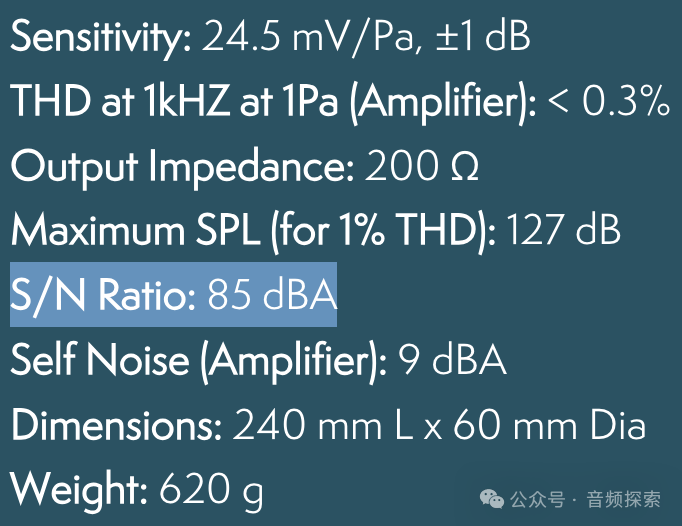In the field of audio, we often hear the term "signal-to-noise ratio". So, what exactly is it?
The signal-to-noise Ratio (SNR) refers to the difference between the useful Signal level and the system's own Noise level, expressed in decibels (dB). The larger the value, the stronger the signal is than the noise, and the cleaner the sound will be.
For instance, when we record human voices with a microphone, if the signal-to-noise ratio is high and the recording distance is appropriate, the recorded sound will be very clean, and no obvious "rustling" background noise will be heard in quiet segments. Conversely, if the signal-to-noise ratio is low, even if the singer sings very well, the voice will be disrupted by annoying background noise.

In microphones, signal-to-noise ratio and self-noise are relatively crucial indicators. The signal-to-noise ratio of the Neumann U87 Ai under cardioid orientation is 82dB, and that of the Telefunken U47 is 85dBA (A stands for A-weighted, which adjusts the measurement results based on the human ear's sensitivity to different frequencies to make the values more in line with the auditory perception). This means that the signals they record are over 80 decibels higher than the background noise, which is already very clean in practical use.

Neumann U87 Ai signal-to-noise ratio

Signal-to-noise ratio of Telefunken U47
In addition, the signal-to-noise ratio and Self Noise can be converted into each other. Manufacturers usually take 94dB SPL (1Pa) as a reference:
• Signal-to-noise ratio =94dB - self-noise (dBA)
•Self-noise =94dB - signal-to-noise ratio
For instance, if the signal-to-noise ratio of the Telefunken U47 is 85dBA, then its self-noise is 94-85=9dBA.
It should be noted that different audio devices attach varying degrees of importance to the signal-to-noise ratio.
In some preamplifiers and audio interfaces, more important parameters are usually equivalent input noise (EIN), dynamic range, etc., which can better reflect the cleanliness of the front-end amplification and analog-to-digital/digital-to-analog conversion processes.
In monitor speakers, manufacturers more often indicate the maximum sound pressure level (Max SPL) and total harmonic distortion (THD), because for playback devices, the key lies in how loud it can be and whether it is clean enough, rather than the static signal-to-noise ratio.
In conclusion, the signal-to-noise ratio is not an isolated parameter; it is closely related to self-noise, dynamic range, and other factors. Understanding its meaning can help us better choose and use audio equipment.
免责声明: 本文章转自其它平台,并不代表本站观点及立场。若有侵权或异议,请联系我们删除。谢谢! Disclaimer: This article is reproduced from other platforms and does not represent the views or positions of this website. If there is any infringement or objection, please contact us to delete it. thank you! |


